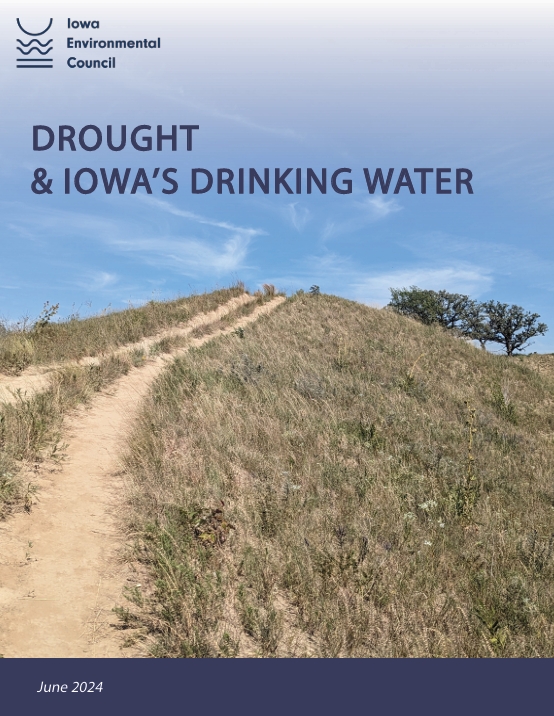IEC Publishes New White Paper on Drought and Drinking Water
posted
on Tuesday, June 18, 2024
in
Water and Land News
Iowa just emerged from its longest period of drought since 1954-1959. Iowa’s average annual temperature is increasing and with annual precipitation down from 2020 to 2023, surface water and groundwater sources of drinking water were depleted. This left many communities across the state with impacted drinking water supplies. Residents in some communities were asked to reduce or eliminate non-essential water usage or switch to bottled water, while community leaders contemplated building new drinking water infrastructure to increase supplies. This cycle is expected to worsen – the National Oceanic and Atmospheric Administration (NOAA) predicts will we experience more frequent droughts as climate change is exacerbated in the coming years.

As Iowa grapples with how to manage water resources in the face of drought and other extreme swings in weather due to climate change, the Iowa Environmental Council has published a new white paper: Drought and Iowa’s Drinking Water. The paper reviews drought vulnerabilities in Iowa, drought impacts on groundwater and surface water sources of drinking water, and mitigation and policy recommendations for managing future drought impacts. It also highlights the impacts that drought has had on drinking water in three Iowa communities in recent years: Belle Plaine, Osceola, and Des Moines.
In 2020, NOAA ranked Iowa among the top three states most vulnerable to drought. This was due to our state’s likelihood of negative economic impact due to drought and lack of ability to adapt and recover from drought. The impact of drought on agriculture, which would lead to negative economic impact, plus a lack of area equipped with infrastructure for irrigation, were large factors in the state’s vulnerability ranking. While most of Iowa’s water use is for power generation, most of that water is not consumed. It is discharged back to its source or reused elsewhere. Agricultural use, along with residential use (the second highest use of water in Iowa), is consumptive, meaning the water is no longer available after use.

While we are recovering from drought now, it is wise to begin planning for, mitigating, and implementing policies to reduce the impacts of the next drought. We can mitigate future impacts by implementing nature-based solutions on the land in both urban and agricultural areas. This natural infrastructure, such as wetlands and drought-resistant native plantings, help retain water, allow greater water infiltration into the soil, and do not require irrigation.
Further, state leaders must consider policy change to prevent future drought impacts. IEC recommends:
- Expanding water monitoring, including groundwater monitoring, to improve forecasting and water use management.
- Improving state and local water use and hazard mitigation planning by integrating climate change modeling and water availability forecasting.
- Instituting restrictions on industrial water use and siting in areas vulnerable to drought impacts on drinking water availability.
State and local leaders must take a proactive approach to managing the state’s water resources in an era of climate change and increasingly frequent drought. Through a combination of mitigation and policy adoption, Iowa can be better prepared for the next drought.
Read the full paper on IEC’s website.